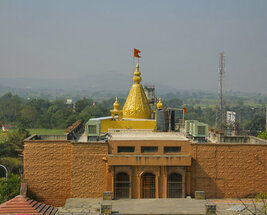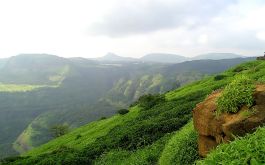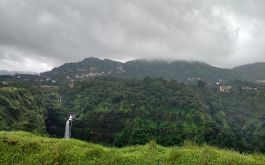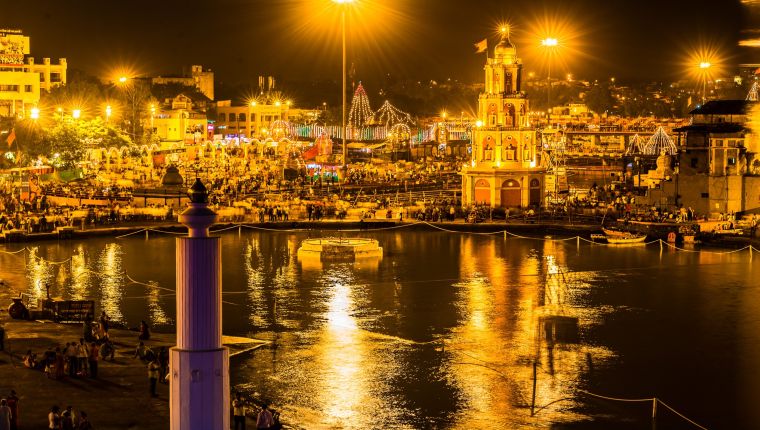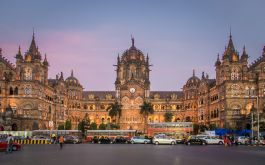Lonavala - Shades of Green
Mumbai and Pune are two of the busiest cities in the country. They bustle with energy, they beam with brightness, they boil over with enthusiasm. But when they need to breathe – there’s one place they go to. Where clouds kiss, caress and blanket the hills. Where the stars that hide from the city lights, reveal themselves in the clear skies of this town. Where swollen streams and waterfalls weep their way down the hill slopes.
This is Lonavala Tourism. A little emerald slice of heaven to explore. An oasis from the busy life of our cities.
| Lonavala Tourism: A Quick View of the City |
| State |
Maharashtra |
| Official Language |
Marathi, English |
| Dial Code |
02114 |
| Population |
57,698 |
| Currency |
Indian Rupee (INR) |
| Time Zone |
GMT+5:30 (IST) |
| Area |
38 square kilometres |
Highlights: Nature, nurtured
Nature
Lonavala is an intriguing patchwork of beautiful spots. Each area has views, greenery and a story to offer. For instance, visit the glorious Tiger’s Leap, or Tiger Point. This lovely spot derives its name from nature – as it resembles the shape of a leaping tiger. Take in the view of thick forests, swollen waterfalls and lakes all around. If you’re up for it, take a 12-kilometre drive from Lonavala to Lion’s Point – a place that offers you deep views of the valley and strong winds to keep you company (be careful). If you’re priority is stone over scenery, why not explore the Bhaja and Karla caves? Over 2200 years old, the Bhaja Buddhist caves boast of the spectacular skills of the craftsmen when they carved into the stone. Climb 300 steep steps to reach the Karla caves. Though your calves may burn, this is a prize well won. These stone cut caves feature gorgeous prayer halls, intricately shaped sculptures, a roof made of carved teakwood, monasteries and more. Bathe in the splatter of the Kune Falls – the 14th highest waterfall in the country. There’s so much to see and do here.
Forts
This small hill station was swept under the rule of many powerful empires. Due to its strategic location, it was blessed with imposing forts – the ruins of which still stand today. Rajmachi Fort offers views of the rippling Shirota Dam and the slopes of the Western Ghats. Tikona Fort, also known as Vitandgad, is shaped like a triangle and was the pride of the Maratha empire. Trek up to the top of Tikona, which offers you stunning views of the surrounding greenery. However, do ensure you are steady of heart and foot before undertaking this trek – the way is narrow, and the steps can be slick and steep in the rain. If you’re looking for an easier climb, head to the Visapur Fort which stands sternly on a lush green plateau. Stand and look out at the view like the first Peshwa of the Maratha Empire – it was he who built the fort that you stand in now. If your thirst for forts runs deeper, don’t worry. You can also visit the neighbouring Lohagad Fort, Koregad Fort, Tunga Fort Ghangad Fort and Manoranjan Fort.
Lakes and Dams
The wind here winds its way through the forests, down the hills and chases little ripples across the various lakes in Lonavala. Stroll around the Pawna lake and dam and take in the calm surface of the water, the reflection of the surrounding trees. You can even try out some water sports on the lake! Bhushi Dam is another tourist favourite. Warm rays of sun hit the flowing water, making this area picture perfect. Sit on the stone steps of the dam and let the water playfully splash all over you. Do note, that you will not be allowed to swim here, as the water flow is inconsistent. The small Tungarli lake and dam is a major source of drinking water for the residents, but it offers a lot more. Have your own picnic here, by the lakeside. Set up camp near the water’s edge and enjoy a mini-camping trip over the weekend.
Cuisine
On a rainy day, nothing sates the appetite like a steaming cup of chai and the magnificent vada pav – a deep fried potato patty, slathered with minty and spicy chutney and stuffed between a cloud-soft bun. Street food favourites also include samosas, moong dal pakoda and Jalebi at the legendary Golden Vada Pav. If you’re looking for fancier dining options, head on over to El Taj, where you can dig into a thick butter chicken and silky smooth Reshmi kebabs. On the old Mumbai-Pune highway you’ll find Kinara Village Dhaba, where you can dig into North Indian and Chinese food. Clear some time and space in your stomach for a heavy lunch at the popular Sunny da Dhaba where you’ll sink into their Chicken Tikka, Chicken Hariyali and Tandoori. Finally, end your trip with a visit to one of Lonavala’s famous places - Cooper’s where you can buy soft squares of fudge and crispy squares of chikki.
Interesting facts about Lonavala:
- The tranquil surroundings of Lonavala hide the fact that it houses one of the largest and most exciting amusement parks in the country – Imagica.
- You can sail over the Sahyadris in a gorgeous hot air balloon safari, here.
- The popular reality show – Big Boss – is shot in Lonavala.
- Sunil Wax Museum in Lonavala boasts of wax statues of Gandhi, Modi and Salman Khan amongst others.
- So, find the peace and serenity you were looking for – nestled in the hills and cradled in the clouds. Are you ready to give Lonavala tourism a try? You won’t regret it.
Location: Down the Road
This hilly town is sandwiched neatly by two of India’s most populated cities – Mumbai and Pune. Drive 96 kilometres from Mumbai and you’ll discover Lonavala. Take a bus from Pune, and 64 kilometres later you’ve arrived. Two grand roads wind their way through Lonavala’s green embrace – the Mumbai-Pune Expressway and the Mumbai-Chennai highway.
Click here to view Lonavala on Google Map
Timings: Best time to visit
Lonavala experiences beautiful weather across the year. Open your calendar and point to a month – you can bet that Lonavala will still have something to offer you. June to September remain drenched, with the clouds releasing sheet after sheet of rain on the rich grey-green slopes of the hills. Waterfalls burst from their sources and slip their silvery way down to the bottom of the hills. The rain coaxes out the greenery, allowing it to burst into bloom. However, do note that there is a bit of risk in travelling during such heavy rains. Carry your protective gear, raincoat and tread carefully on the slippery terrain.
Winters invite the light rays of the sun and chilly winds. Temperatures vary between 11-25 degrees Celsius. The clouds part, two weeks after the monsoon, allowing you to view the beauty that the rain brings forth. This is a great time to explore Lonavala and the surroundings and even indulge in a daily hike. Do be prepared for crowded tourist spots and skyrocketing hotel prices – this is, after all, when everybody loves Lonavala.
Summers can lean towards hot and humid. Temperatures inch their way to 35 degrees Celsuis, particularly in the afternoon. However, the evenings return to their pleasant state, and this is considered the off-season for the town. If you’re looking for peace and quiet – you’ve found it here.
How to get to Lonavala: Tunnel Vision
By Road - This is a road trip you don’t want to miss! Whether you take your car, a State bus, private bus, AC, Non-AC. This trip demands the window seat. You can drive down the Mumbai-Pune Expressway, old Mumbai-Pune road (NH4) to reach Lonavala.
By Rail - Lonavala boasts of its own railway station. You can catch the Intercity Express or other mail and passenger trains from Pune or Bombay. These trains are available regularly, so if you miss one, you just need to catch the next train headed to Lonavala.
By Air - 62 kilometres away from Lonavala, is the Lohegaon airport in Pune. Many domestic flights land here and you can also catch international flights to Dubai and Singapore from this airport. For more international destinations, you can drive to Mumbai and board a flight at the Chhatrapati Shivaji Maharaj International Airport.
History: Kings of the Hill
Lonavala was a tiny emerald on the crown of many empires – starting with the Yadavas. In time, the Mughal emperors realised the strategic importance of this small town and took over. They were swiftly followed by the Marathas and Peshwa empires. The last two, in particular, built most of the forts found in the area.
In 1871, the British established their control over Lonavala, and it became an important hill station. It was discovered by Lord Elphinstone, who was the Governor of the Bombay Presidency at the time.
Lonavala’s landscape also unearths clues to its past. For instance, the Bhaja and Karla caves are said to date back to the 2nd century B.C. and are one of the best places to visit in Lonavala.
Here’s a look at what else tourism in Lonavala means.









